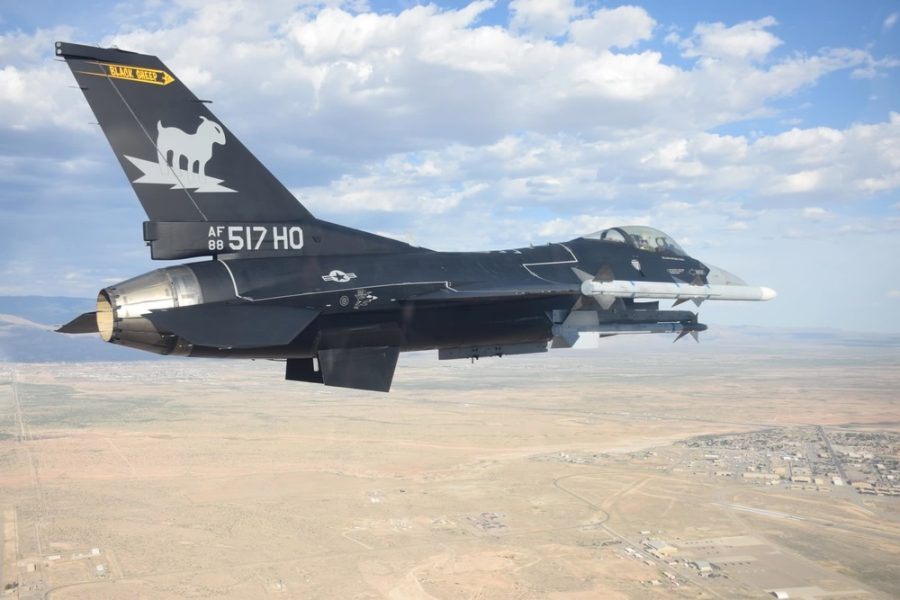The 8th Fighter Squadron at Holloman Air Force Base, N.M., took a page out of the history books last month when it unveiled its F-16 flagship painted in a black and grey color scheme honoring the squadron’s past life flying the F-117 Nighthawk, the world’s first operational stealth aircraft.
“We decided to highlight a unique facet of our history which aligns perfectly with the identity of our unit,” instructor pilot Maj. Daniel Thompson said in a July 1 press release.
Though the unit is now a training squadron for F-16 pilots, from 1992 to 2008 the 8th Fighter Squadron flew the F-117, an arrowhead-shaped jet designed to sneak past radar systems and strike targets deep in enemy territory. Development first began in 1978, with a first flight in 1981, but it was not until 1988 that the Pentagon acknowledged the existence of “the Black Jet.”
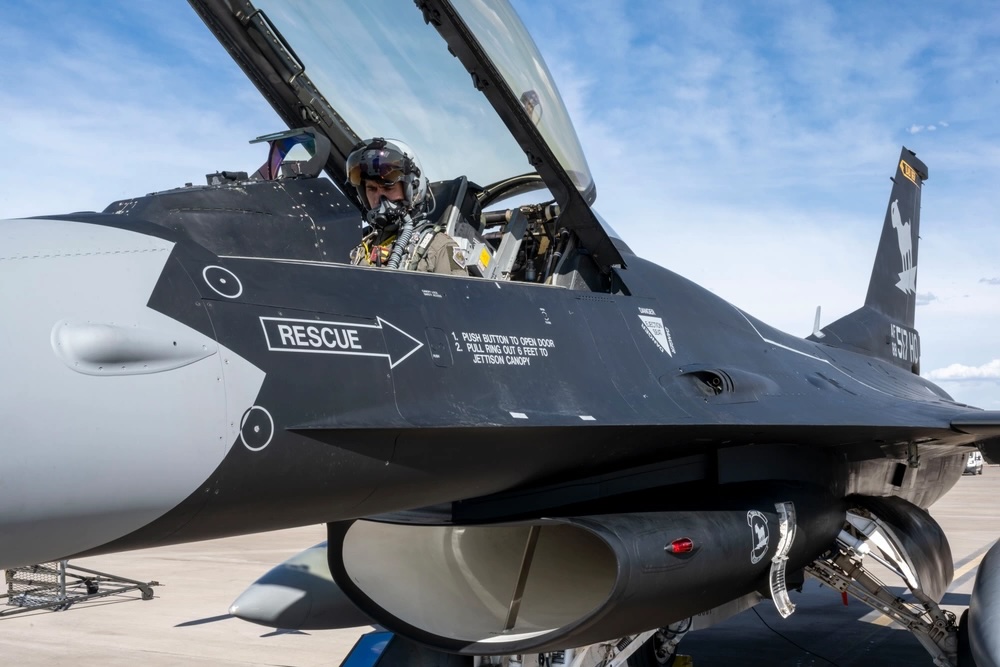
The F-117 debuted in the 1989 invasion of Panama and flew more than 1,000 sorties dropping precision-guided munitions in 1991 during Operation Desert Storm. In 1992, the Black Jet joined “The Black Sheep” of the 8th Fighter Squadron, which earned its nickname flying P-40, P-47, P-38, and P-51 fighters over the Pacific Theater in World War II. To this day, the squadron emblem is a black sheep standing on a lightning bolt.
“Symbolic of the ‘daredevil’ qualities of fearlessness and boldness, he characterizes the squadron and its personnel,” according to one squadron history. “The lightning upon which he stands indicates the unit’s striking power.”
The F-117 greatly enhanced that striking power when the 8th deployed to the Middle East in the 1990s as part of Operation Southern Watch and to Europe in 1999 as part of Operation Allied Force, NATO’s effort to stop ethnic cleansing in Kosovo. That March, the 8th’s Lt. Col. Darrell P. Zelko was shot down by a Yugoslavian surface-to-air missile but was picked up by Air Force rescue teams later that night.
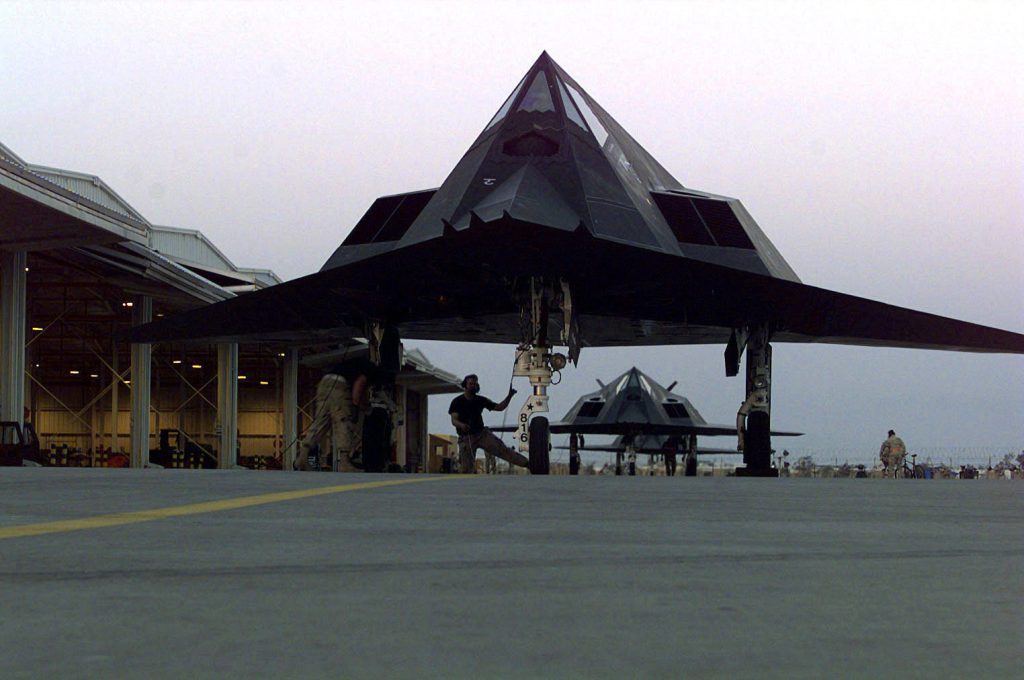
The 8th and its Nighthawks returned to Iraq in 2003 for Operation Iraqi Freedom, where F-117 pilots struck targets where Iraqi president Saddam Hussein was suspected to be hiding.
By the time Iraqi forces responded to explosions in Baghdad, “I was already gone,” one Nighthawk pilot told Air Force historian Brian Laslie in a recent book.
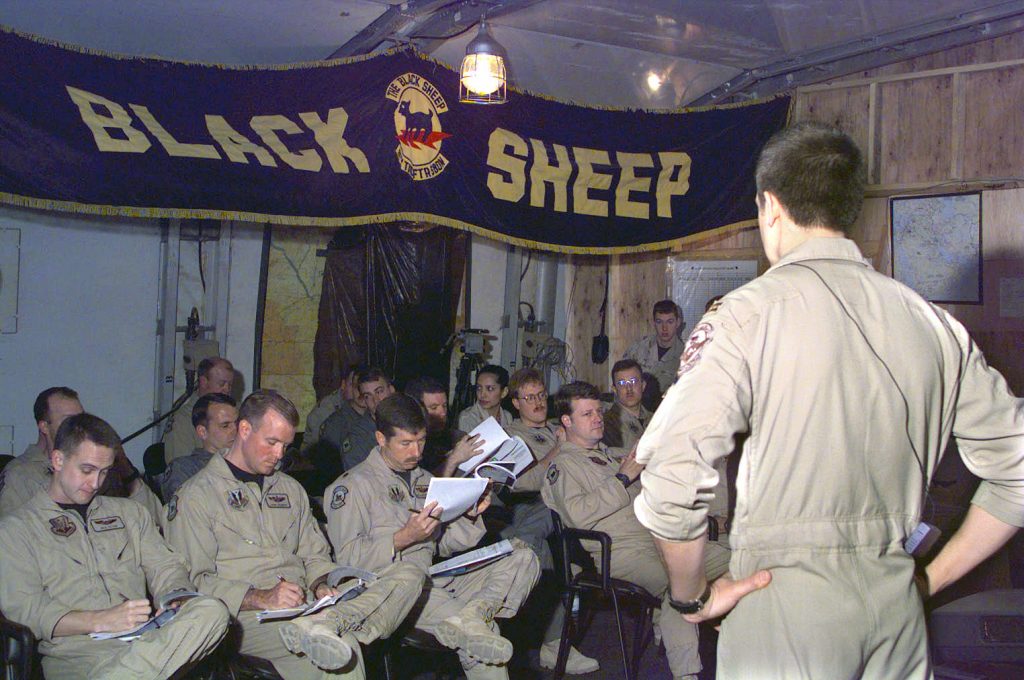
The Black Sheep continued to fly the Black Jet until 2008, when the squadron inactivated and the Nighthawk retired to climate-controlled storage facilities at Tonopah Test Range, Nev. But both the squadron and the F-117 have enjoyed a busy afterlife. The 8th returned in 2009 as an F-22 fighter squadron, then inactivated again in 2011 before reactivating a second time in 2017 as an F-16 training squadron.
Meanwhile, the F-117 reemerged at least as early as 2020 to serve as aggressor aircraft against U.S. fighter pilots in large scale exercises such as Red Flag and Sentry Savannah. There are about 45 Nighthawks that can fly or be brought back to flight, and the Air Force expects to keep the F-117 flying for test and training purposes through at least 2034.
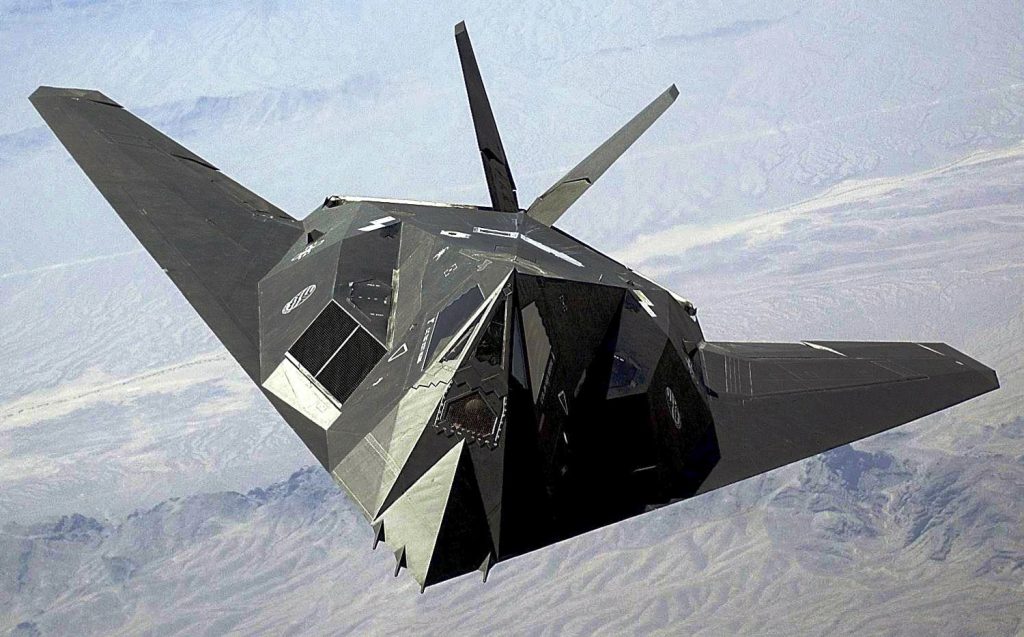
All of that legacy was painted onto the 8th’s flagship F-16 with the help of the fighter maintenance depot at Hill Air Force Base, Utah.
“The F-117 paint scheme preserves and honors the legacy of the 8th Fighter Squadron from 1992 to 2008 and fosters a sense of pride continuity, reinforcing the unit’s identity and traditions,” Martha Whipple, historian for Holloman’s 49th Wing, said in a release. “This paint scheme bridges the past and present, educating the new generations of maintainers and pilots about the history of the Black Sheep.”
The F-16 flies as a daily trainer aircraft and represents the squadron at air shows.
“We were striving for a design that allowed the jet to perform in training and look good from all angles,” said Thompson, the instructor pilot. The paint job “never fails to make me smile whenever I catch a glimpse of it.”
